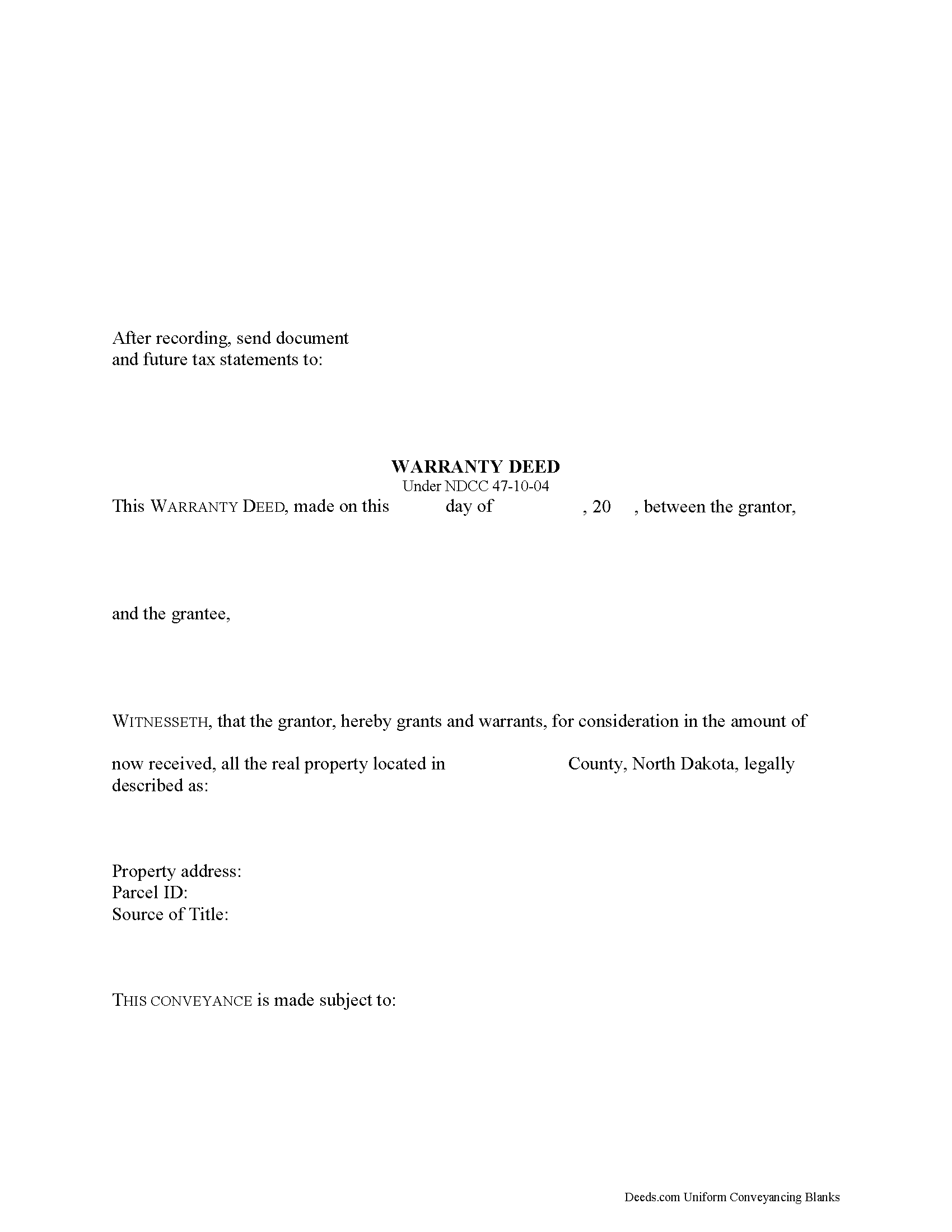Download North Dakota Warranty Deed Legal Forms

North Dakota Warranty Deed Overview

Real property in North Dakota can be transferred with a warranty deed in writing, subscribed by the grantor or the grantor's lawful agent. Real property consists of land, that which is affixed to land, that which is incidental or appurtenant to land, and that which is immovable by law (47-01-03). An agreement on the part of a seller of real property binds the seller to insert covenants of seizin, quiet enjoyment, further assurances, general warranty, and a covenant against encumbrances. These covenants are typically provided in a warranty deed. The covenants must be presented as set forth in 47-10-04 of the North Dakota Century Code. The statutory form of a grant of real property is provided in 47-10-06 of the North Dakota Century Code and can be used for a warranty deed in this state.
Before a warranty deed can be recorded in North Dakota, it must be signed and acknowledged by the grantor, and must contain original signatures (47-19-03). If a warranty deed has not been acknowledged as required, it must be proved by a subscribing witness to entitle it to be recorded (47-10-05). The proof or acknowledgment of a deed can be made at any place in North Dakota before a judge or clerk of the Supreme Court or a notary public (47-19-13). Other authorized officers in North Dakota, such as a mayor of a city, a recorder, or a county auditor, are able to take acknowledgments or proof only within their district (47-19-14). An officer taking proof or acknowledgment must endorse or attach a certificate to the deed (47-19-25, 26). A certificate of acknowledgment, unless provided otherwise, must be in substantially the form provided in 47-19-27 of the North Dakota Century Code. A deed acknowledged out-of-state and in accordance with the laws of such state will be accepted for recording in North Dakota (47-19-35). In order to be recorded, some warranty deeds will need to have an auditor's certificate of transfer and a completed Statement of Full Consideration (11-18-02 and 11-18-02.2).
A warranty deed should be recorded in the office of the county recorder in the county where the property is located. Once a warranty deed has been duly signed and acknowledged, the act of recording will serve as constructive notice of the contents of the instrument, as it appears of record, to all persons (47-19-19). A warranty deed that has not been recorded is void against any subsequent purchaser in good faith, and for a valuable consideration, of the same real estate or portion thereof, whose conveyance is first deposited with the recorder and subsequently recorded, whether it is entitled to be recorded or not, or as against any attachment levied thereon or any judgment lawfully obtained at the suit of any party, against the person in whose name the title to such land appears of record, prior to the recording of such conveyance (47-19-41). If a warranty deed is not recorded, it will be valid between the parties thereto and those who have notice of the instrument (47-19-46).
(North Dakota WD Package includes form, guidelines, and completed example)